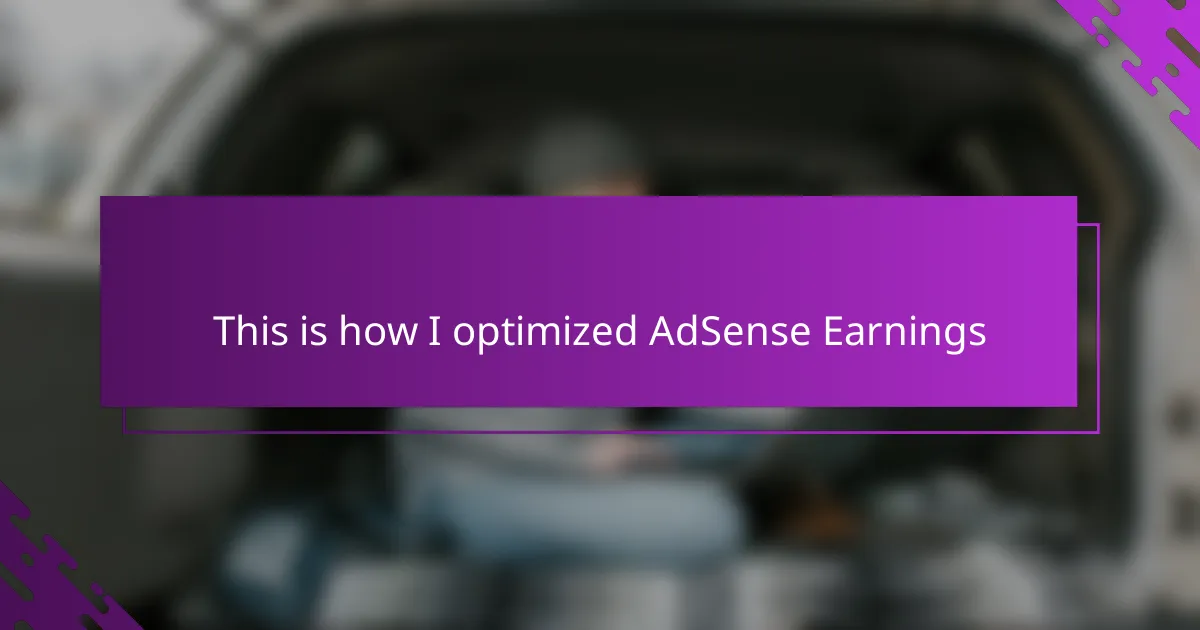Key takeaways
- Understanding AdSense’s algorithm and focusing on quality visitor engagement is essential for maximizing earnings.
- Choosing a profitable niche, such as finance or technology, can significantly increase ad revenue without requiring high traffic.
- Effective ad placement and mixing various ad formats can enhance click-through rates and overall user experience.
- Regularly analyzing performance metrics helps identify trends and optimize earnings through informed decisions and timely adjustments.
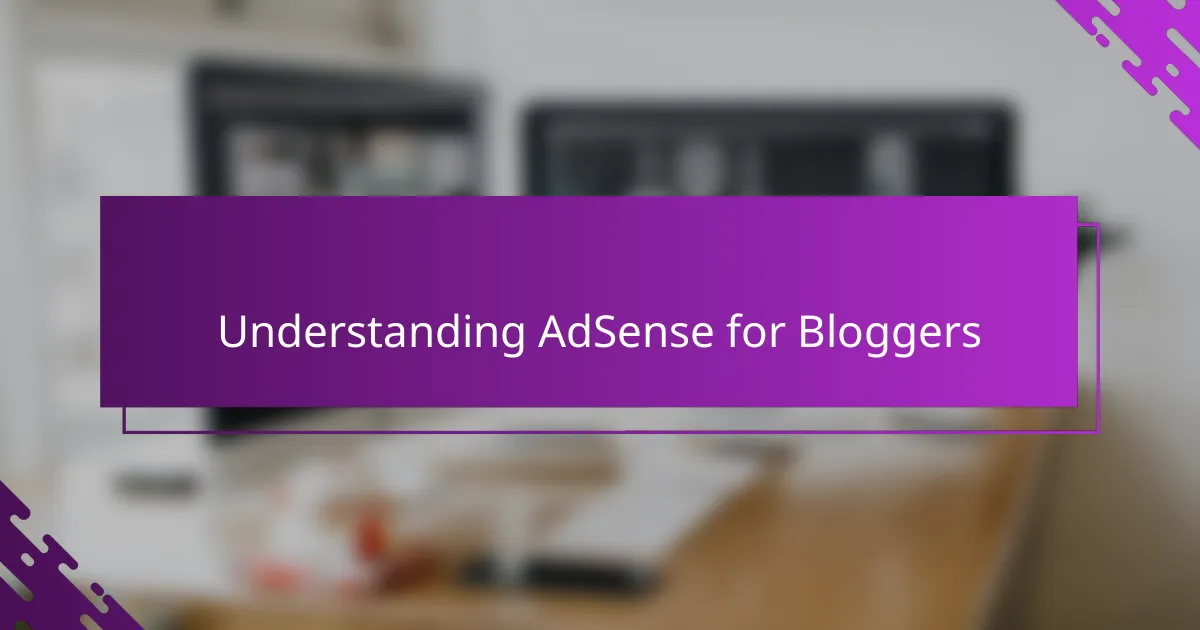
Understanding AdSense for Bloggers
When I first started using AdSense, I quickly realized it’s not just about slapping ads on your blog and hoping for the best. Understanding how AdSense works—the way it matches ads to your content and visitors—has been crucial in boosting my earnings. Have you ever wondered why some ads seem more relevant than others? That’s AdSense’s smart algorithm at work, trying to connect the right ads to the right audience.
At first, the dashboard with all those metrics felt overwhelming. But diving into insights like click-through rates and cost per click gave me a clearer picture of what’s actually driving revenue. I learned that it’s not necessarily about traffic volume alone but the quality and engagement of visitors that truly matter for AdSense success.
Knowing AdSense’s policies and best practices also saved me from costly mistakes. I remember the anxiety of waiting for my account approval, and how much I valued clear guidelines to keep my blog compliant. It made me realize that patience and understanding the platform’s nuances pay off in the long run.
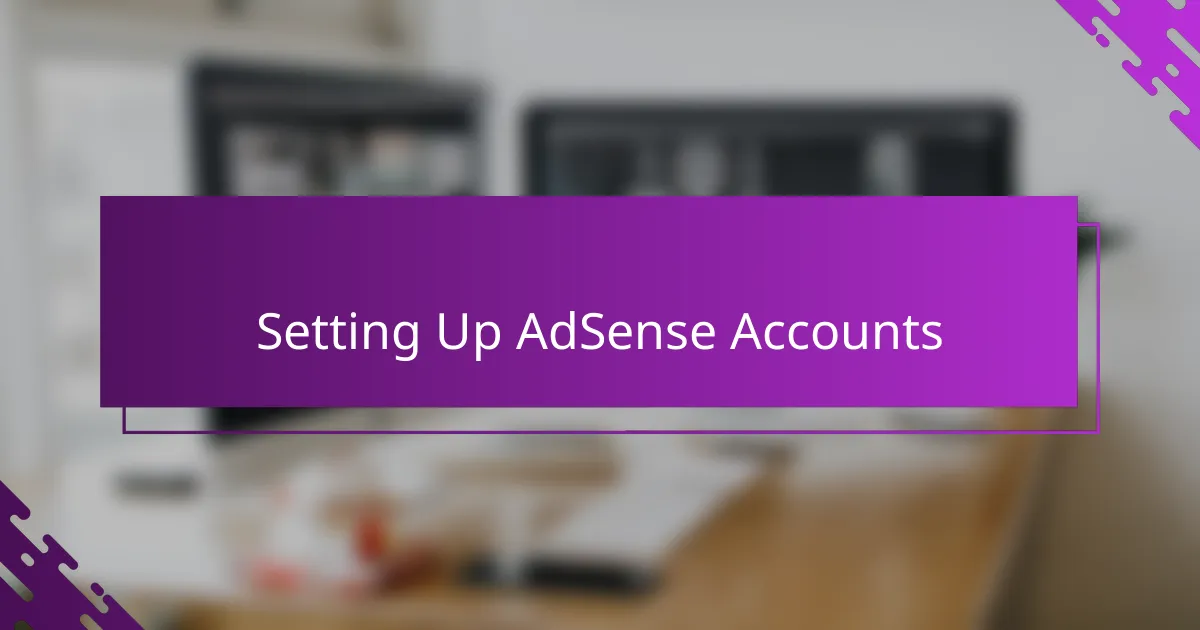
Setting Up AdSense Accounts
Setting up my AdSense account was nerve-wracking at first—I kept asking myself, “Will my blog even get approved?” Waiting felt like forever, but I learned that carefully following Google’s guidelines made all the difference. Have you ever hesitated because the process seemed complicated? Trust me, patience here pays off big time.
Applying for AdSense wasn’t just about filling out forms; it meant making sure my blog met certain standards like having original content and easy navigation. I found that double-checking these details before submitting saved me from unnecessary rejection and frustration.
Once my account was approved, I explored the dashboard to link my site properly and set up ad units. This step felt like unlocking a new level—I could finally start experimenting with ad placements and formats, knowing everything was set up right from the beginning.

Choosing High Paying Niches
Choosing the right niche felt like a game-changer for me. I remember switching from a broad lifestyle blog to focusing on personal finance advice—and suddenly, the ad earnings started climbing noticeably. It made me realize that some topics inherently attract higher-paying ads because advertisers compete more aggressively in those spaces.
Have you noticed how certain industries like technology, finance, or health seem to have ads everywhere? That’s no accident. These niches tend to have higher cost-per-click (CPC) rates, meaning each ad click can bring in more revenue. I found that targeting content within these lucrative areas helped me maximize my AdSense potential without needing overwhelming traffic.
Of course, choosing a high-paying niche doesn’t mean you should ignore your passion. I learned that balancing topics that pay well with ones I genuinely enjoy keeps the content authentic and engaging, which ultimately leads to better audience retention—and better earnings in the long run. Have you found that sweet spot yet?
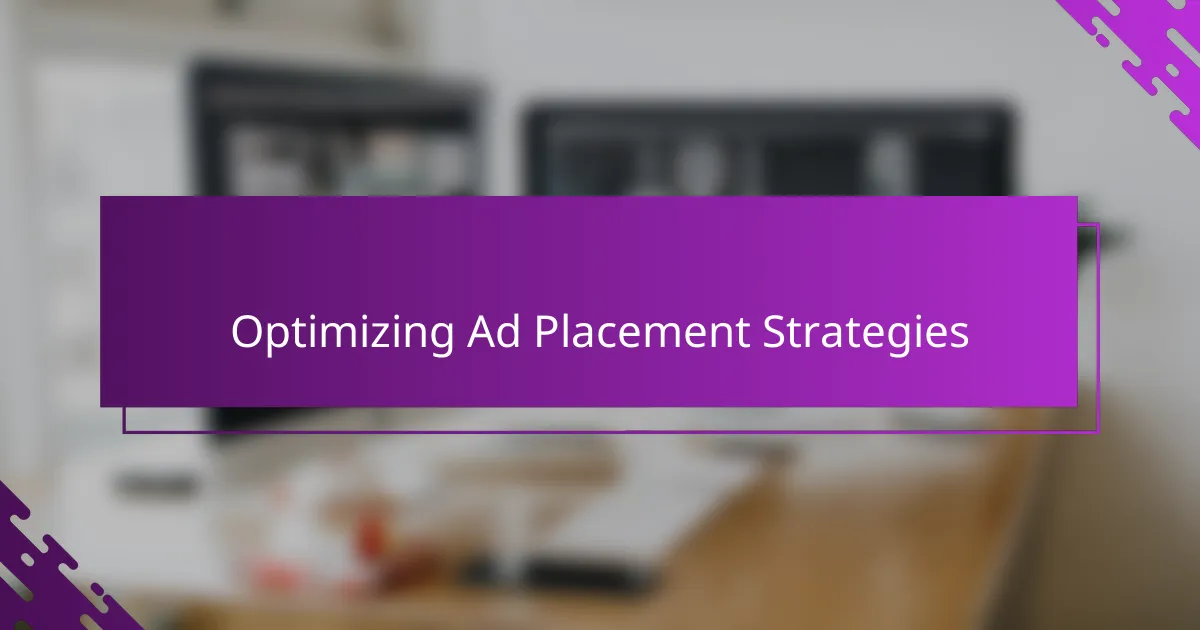
Optimizing Ad Placement Strategies
Finding the right spot for ads felt more like an art than a science at first. I experimented with placing ads near the top of posts because that’s where readers’ eyes naturally wander first. Have you ever noticed how ads just below the headline or within the first couple of paragraphs tend to get more attention? That little tweak gave me a noticeable bump in clicks.
But I didn’t stop there. I learned that mixing ad formats—like combining in-article ads with sidebar units—helps keep the experience balanced. It’s a bit like seasoning a dish: too much of one thing can overwhelm, but the right blend makes everything work smoothly. I remember feeling relieved when my readers didn’t complain, yet my earnings quietly improved.
Also, responsive ad placements proved essential as more visitors came from mobile devices. I started testing how ads adjusted to different screens, making sure they never felt intrusive or too cramped. Have you checked your blog on a phone lately? Ensuring ads look good and load fast on mobile made a big difference in holding my audience and boosting engagement.
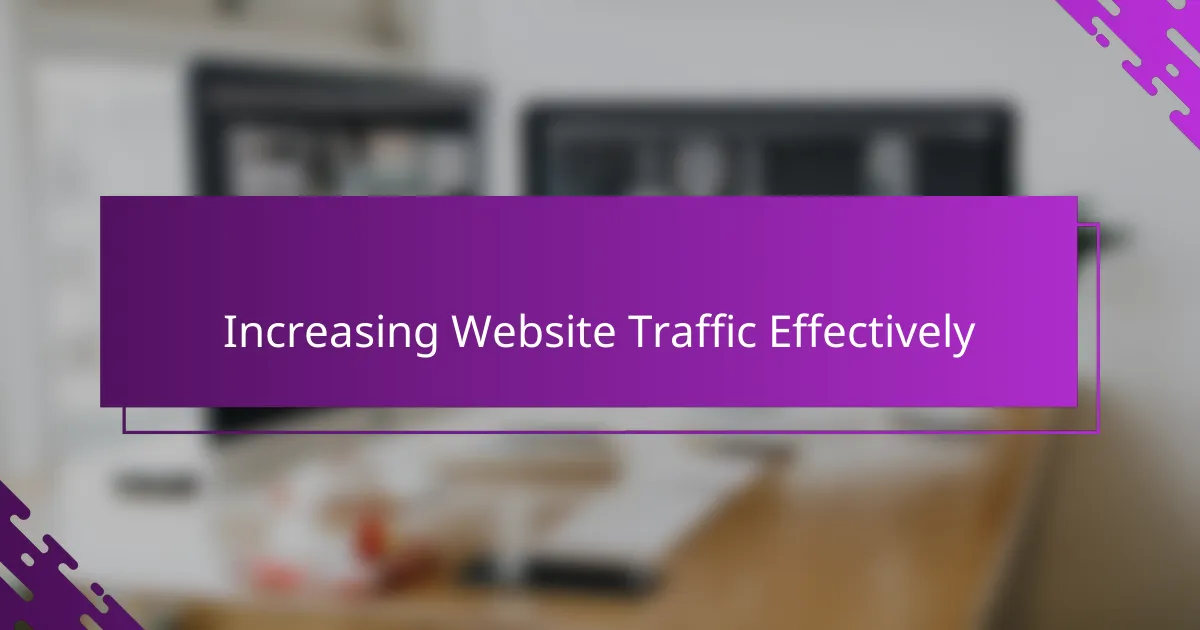
Increasing Website Traffic Effectively
Boosting website traffic felt like trying to catch lightning in a bottle when I first started. I quickly learned that organic growth comes from consistently creating valuable content that speaks directly to my readers’ interests. Do you ever wonder why some posts suddenly go viral? For me, it was all about tapping into what my audience genuinely cared about and then sharing it where they already hang out online.
I also discovered that traffic isn’t just about numbers; it’s about the right kind of visitors. That meant diving into SEO basics—like optimizing keywords and improving page speed—which helped my blog show up higher on Google. I remember the thrill of seeing my daily visitors climb steadily, not because of luck but because I took time to understand how search engines work.
Social media, surprisingly, became my secret weapon. I started engaging with communities related to my niche, not just posting links but having real conversations. Have you tried joining Facebook groups or Twitter chats? The connections I made there translated into loyal readers who kept coming back—and clicking on those AdSense ads too.
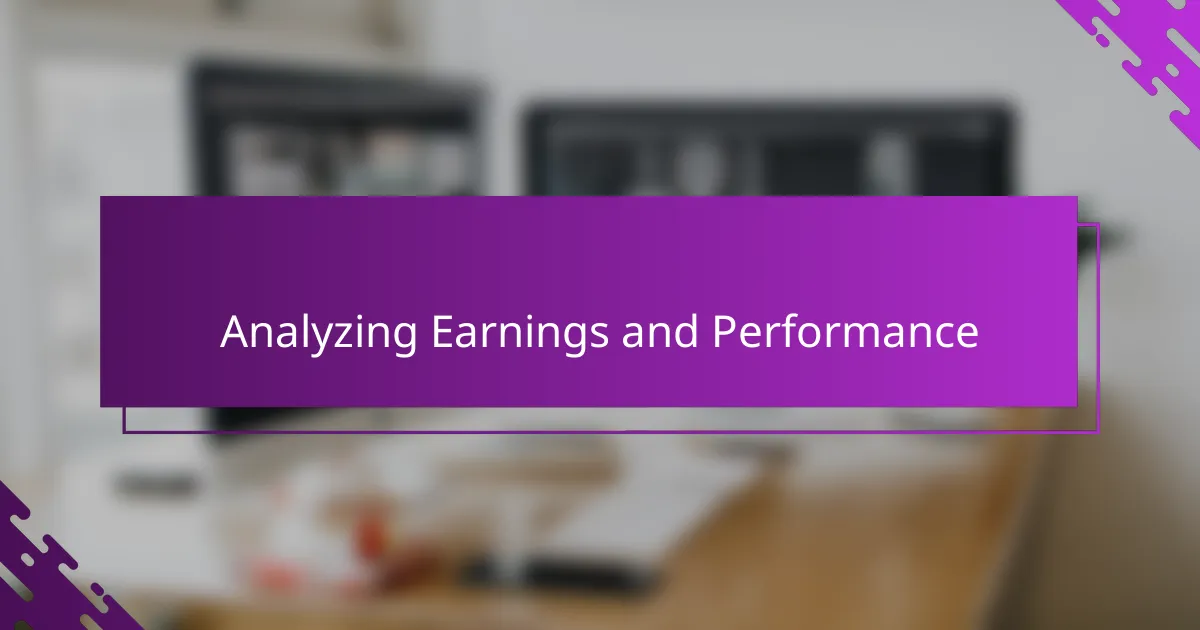
Analyzing Earnings and Performance
When I first examined my AdSense dashboard closely, I was surprised by how much the numbers could reveal. I found myself asking, “Which ads are truly driving my revenue?” By focusing on key metrics like click-through rate (CTR) and cost per click (CPC), I gained insights into what content resonated with my audience—and which ads performed best. It felt like solving a puzzle where every piece mattered.
One moment that stuck with me was when I noticed a sudden drop in RPM (revenue per thousand impressions). Instead of panicking, I dived into the data to discover that certain high-paying ads weren’t showing as often. That experience taught me the importance of consistently analyzing performance trends rather than waiting for surprises. Are you monitoring your stats regularly enough to catch those fluctuations early?
I also realized that comparing different time frames helped me understand seasonal shifts and content impact on earnings. For example, some months showed higher engagement, prompting me to adjust my posting schedule for maximum effect. It became clear that analyzing earnings isn’t a one-time task; it’s an ongoing conversation between me, my blog, and the numbers. How often do you review your AdSense reports to make informed decisions?
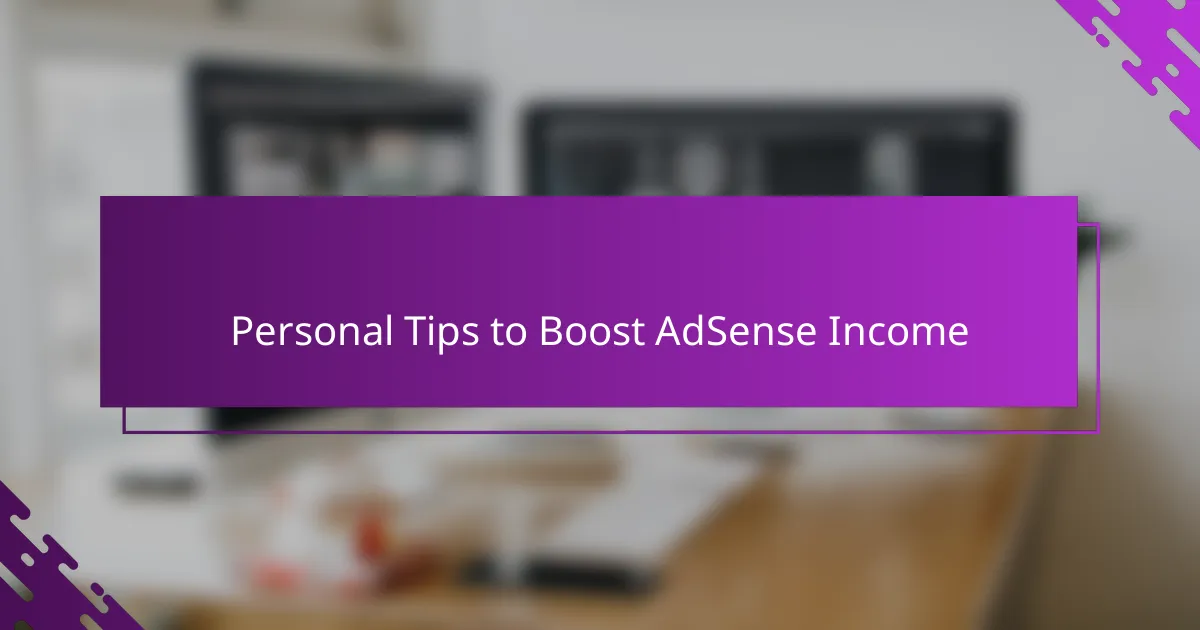
Personal Tips to Boost AdSense Income
I found that subtle changes in ad placement made a huge difference. At one point, I moved an ad unit just above the fold—where visitors land without scrolling—and saw clicks increase almost instantly. Have you ever tried repositioning ads to places your eyes naturally go first? That little shift gave me a surprising boost without annoying my readers.
Another thing I learned was to mix ad formats thoughtfully. Using a combination of text, display, and in-article ads kept the experience fresh for my visitors. It’s like giving them choices without overwhelming them. When I balanced these well, my earnings climbed steadily, and the blog felt less cluttered.
Lastly, I can’t stress enough how important it is to test and review regularly. One weekend, I paused all ads for a day just to see what would happen—and earnings dropped sharply. That experiment reminded me that optimization isn’t a one-time fix but a continuous process. How often do you experiment with your ad layout to find what clicks with your audience?
